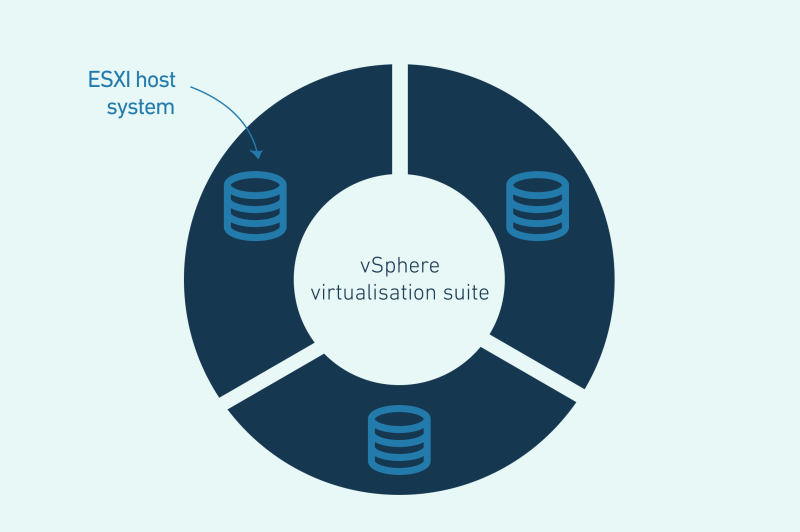What is vCenter?
The vCenter is an extensible server management software from VMware that has been specially developed for the management of virtual VMware environments. With vCenter, IT administrators can manage multiple ESXi host systems (the server systems) and the virtual machines running on them efficiently and centrally via a single platform. Different ESXi hosts, i.e. servers, can each be combined to form a VMware cluster. This means that several virtual machines can be managed together in each VMware cluster.

VMware vCenter also offers a wide range of functions. These include, for example, the centralised management of all physical and virtual resources available in the cloud infrastructure. Performance reports on the various VM instances can also be viewed in the platform and automation mechanisms can be implemented.
Automation mechanisms in the vCenter - And how to implement them
The most important automation mechanisms of the vCenter platform include
- vSphere HA (High Availability) ensures that if one or more servers (host systems) fail, the virtual machines affected by the failure are restarted on other host systems. The priority of the restart of the virtual machines and the isolation response policy can be configured at the cluster level of the VMware clusters. The isolation response policy defines how virtual machines should behave if an ESXi host system in a VMware cluster loses its connection to the rest of the cluster.
- vSphere DRS (Distributed Resource Scheduler) optimises the distribution of resources across the various virtual machines in a VMware cluster - fully automatically. The vSphere DRS can be activated and configured in the cluster settings. During configuration, threshold values can be defined from which a reaction should occur.
Administrators can access the vCentre console via the vSphere Client to control and monitor the entire environment. This enables improved efficiency and scalability as well as simplified management of large IT infrastructures.
Centralised control enables administrators to react quickly to changes and optimise the availability and performance of the entire virtual environment.
Difference vSphere ESXi
The difference between vSphere and ESXi (Elastic Sky X Integrated) is that vSphere is the virtualisation platform from VMware itself, while ESXi is a so-called type 1 hypervisor that makes it possible to run multiple operating systems on one server. ESXI instances achieve this by acting as the managing software layer on the respective server. In contrast to type 1 hypervisors, type 2 hypervisors require an operating system as an intermediate layer in order to be able to access hardware components of the respective server.
In short, vSphere is the comprehensive suite for virtualisation management and automation, while ESXi is a hypervisor within the suite that provides the basic virtualisation functionality on the respective server.

Summary
The vCenter is a centralised management software for vSphere environments that enables IT administrators to efficiently manage multiple ESXi hosts and their virtual machines. The VMware vCenter combines several servers (each running an ESXi instance) into VMware clusters and offers central functions such as performance monitoring and resource management.
Smart automation mechanisms such as vSphere HA (High Availability) and vSphere DRS (Distributed Resource Scheduler) ensure high availability and optimal resource utilisation within the virtual environment. System administrators can access the vCenter via the vSphere Client and centrally control and monitor the entire infrastructure. While vSphere is a comprehensive suite for desktop virtualisation, ESXi is a hypervisor within VMware's virtualisation suite.